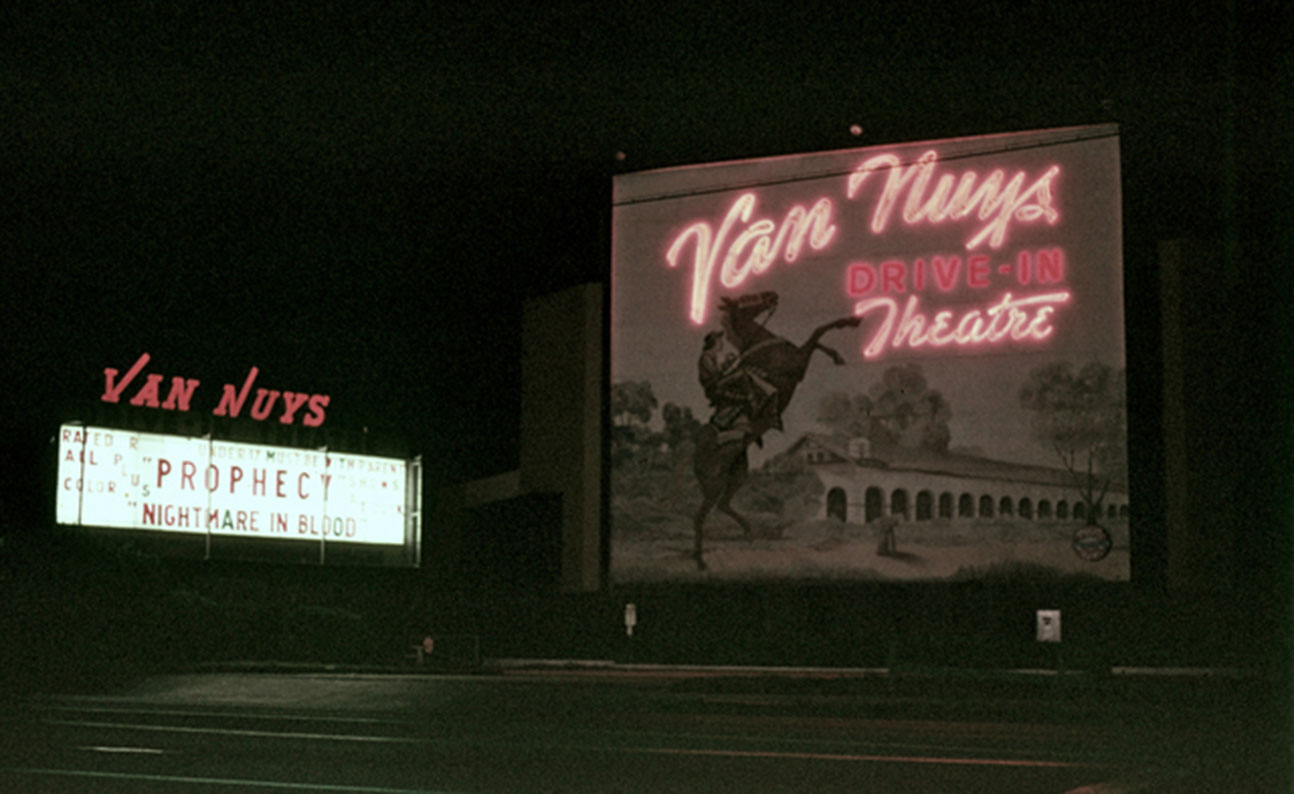
Van Nuys Drive-in Theatre at night, c. 1979. © Glenn Morgan, Creative Commons.
• Considering imitation in poetry and art. (New York Review Daily)
• The smelliest summer in Victorian England: “The Thames stank not just because it was hot, but because the population of London had doubled in the first half of the nineteenth century. Two million people were now using water closets instead of putting their waste matter into pits at the back of their houses which were then emptied by night soil men. In a misguided attempt to improve sanitation, the authorities had decided not to use these pits and heaps, but to give people water closets. Now, that’s fine, but the water closets then discharged all the raw human sewage into the rainwater drains, which went into the Thames. They didn’t realize this was what they were doing, but they were sending human feces and so on straight into the Thames. The Thames was a tidal river. It doesn’t get rid of the load. The load just went up and down, ebbing and flowing, and then unfortunately water companies were taking drinking water out of the Thames. So there was real anxiety, quite rightly, about disease, as well as the intolerable stench of this material going up and down.” (Pictorial)
• The Summer of Love was a disaster for the city of San Francisco. (Longreads)
• In the late nineteenth century, New York City must grow upward: “New York City’s first skyscraper, the Tower Building at 50 Broadway, was eleven stories high and completed in 1889. In 1890, the tallest building in the world, the New York World Building, was twenty stories. Such efforts at scraping the sky were modest in comparison to the towers that came later, but a leap upward in comparison to what preceded them.” (JSTOR Daily)
• While the architecture of Los Angeles’ San Fernando Valley has oft been immortalized onscreen, many of its landmarks are disappearing. (Curbed LA)
• In 1892 spectators at Carnegie Hall could travel to the moon: “As soon as the theater’s lights went down, the sun came up again, rising over an onstage lake that rippled just like the real thing. Next, the moon began to rise next to the sun, and gradually, dramatically obscured it. This was Scene #1 of A Trip to the Moon—a perfect rendition of the total solar eclipse of 1887, yanked through time and space and reconstructed inside the theater.” (Atlas Obscura)